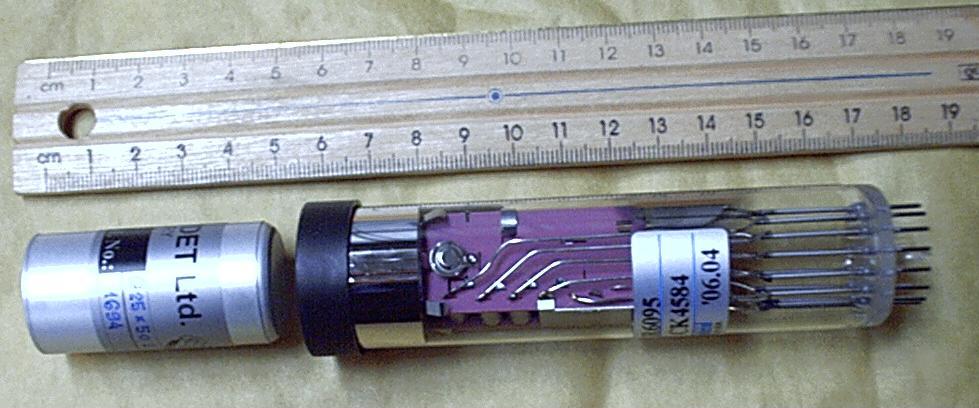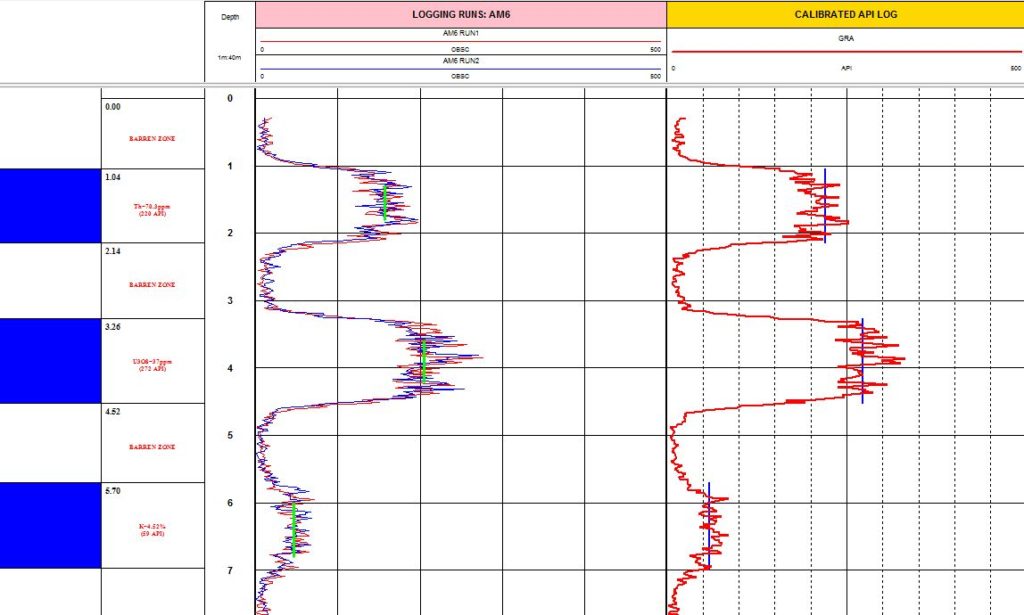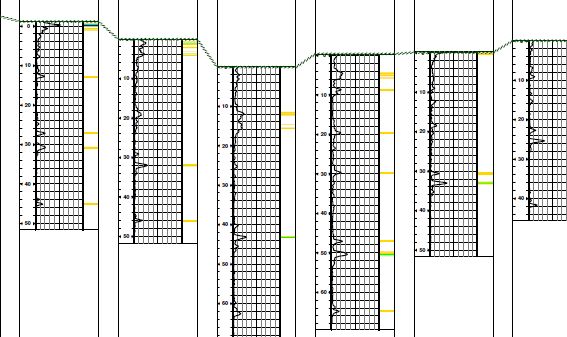NATURAL (TOTAL) GAMMA LOGGING – OVERVIEW
GAMMA LOGGING APPLICATION:
Measurement of the total naturally occurring gamma radiation. For the geological record the dominant contributors of gamma radiation are Potassium, Uranium and Thorium. It is the dominance of Potassium’s contribution and its common association with clay minerals which has led to the total gamma method being used as a shale/clay indicator within boreholes.
Other applications include regional correlation between boreholes, measurement of Uranium grade (eU3O8), identification of mineral sand lag deposits, to name but a few. Commonly used in multi-probe logging strings for depth control.
GAMMA LOGGING METHOD:
Utilises a sodium iodide crystal connected to photomultiplier to count photons produced through capture of gammas as they pass through the scintillation system. Statistical by nature, lower logging speeds are recommended where grade or boundary definition is important.
GAMMA LOGGING CALIBRATION:
For sedimentological purposes, the most common calibration unit is API based on a series of models in Houston, Texas. The Adelaide models AM6 is the most common Australian reference for API calibration.
For Uranium grade measurements (eU3O8), a series of models for grade and borehole diameter are available at the Adelaide Models. Calibration involves definition of a detector system’s deadtime and K factor
GAMMA LOGGING VERIFICATION:
Site verification borehole can be used for verification work. For uranium exploration, at Borehole Wireline, we use a small Caesium source mounted in a jig apparatus and attached to a specific position on the probe’s body. Performed prior on daily basis.
GAMMA LOGGING DATA PROCESSING:
Commonly used for uranium grade, volume of shale, regional correlation and depth control.




